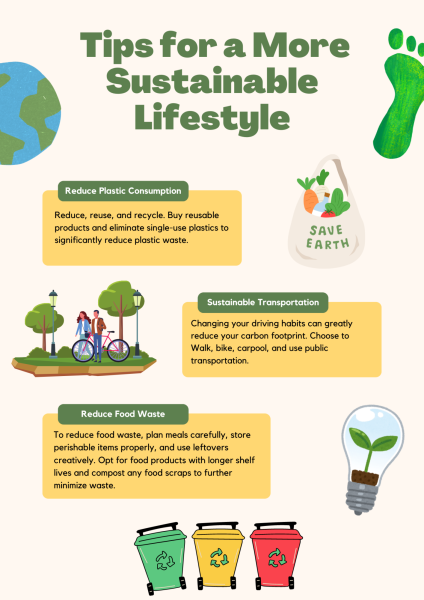It is no secret that global warming from human-induced practices is putting the life of the planet at risk. According to a 2020 global student survey from NielsenIQ, 92 percent of students believed that all universities and colleges should actively incorporate and promote sustainable development. This poses the questions: what action is being made by the students and schools in order to see improvements? With increased pressures to incorporate sustainable practices and systems, what is Redwood doing to approach this challenge?
In the late 1980s, Marin County was one of the first counties to start a curbside recycling system in the United States. Despite efforts in the past to encourage more recycling systems, students who demonstrate insufficient concern to correctly follow recycling and composting protocols result in schools struggling to meet the needs of the many who do care. With that being said, there is a lack of recycling bins that are easily accessible to students apart from the ones indoors. Senior Odin Palen is an active member of the Eco Connections Club, which aims to connect students to nature and shares a student perspective on the lack of access to recycling.
“If [the schools] had recycling and compost outside, it would make it a lot easier to reduce waste,” Palen said.
There are many students like Palen who care deeply about the subject of sustainability and eco-friendly practices. According to a study by NielsenIQ, 78 percent of U.S. consumers stated that a sustainable lifestyle was important to them. Students who participate in following recycling and composting protocols correctly, and deeply believe and care for these systems, are restricted from making an impact by those who do not share similar beliefs.
Sustainable Agriculture teacher, Joe Stewart, cares deeply about positive environmental action.
“There has been a lot of support for [implementing more recycling] from teachers, clubs, administration and custodial staff, but one of the biggest challenges is just educating students or getting students to all care enough,” Stewart said.

A Redwood student throws away recyclables in a landfill trash bin, highlighting challenges with proper waste and recycling disposal.
Making Redwood and other schools more sustainable isn’t just up to school districts, it is also up to the students to make these systems accessible to all and function properly. Currently, Redwood provides a three bin system for students to be able to properly sort trash, papers and recyclables within their classrooms. Regardless of the efforts made by school districts to also create more accessible outdoor recycling systems along with indoor systems, they are unable to make these systems function due to lack of participation. Sustainability is not limited to just one thing or action like recycling, there are plenty of ways to be sustainable or insert daily sustainable practices. According to the California Energy Commision, California’s transportation sector is responsible for approximately 50 percent of the state’s greenhouse gas emissions, nearly 80 percent of nitrogen oxide pollution and 90 percent of diesel particulate matter pollution. Sustainable forms of transportation are another great way for students to become more eco-friendly. Redwood promotes sustainability on Oct. 2 through the Walk or Roll to School Day, where walking or biking to school is encouraged in order for students to become more involved with living a more sustainable life. They also award students the chance to enter and win a prize to encourage more participation.
“The truth is, when we’re looking at something like the environment, we really have to create agreements because we all share the environment. We all impact it and the choices we make impacts everybody,” Stewart said.

Redwood aims to improve their sustainable practices if the $289 million bond measure in November gets passed. Mike Woolard, Senior Director of Facilities Planning, provides details about the future plans they have in mind to create more sustainable facilities.
“[The bond] generates 289 million dollars of revenue for us to invest back into our facilities. As part of that, we’re looking to build some new buildings which will add additional energy saving components to the project,” Woolard said.
This specific bond could potentially help afford installation of solar powered buildings, more efficient heating systems, ventilation and air conditioning systems and more efficient operating plans implemented throughout the school.
Redwood has made good efforts in promoting sustainability through student-led initiatives and school efforts to be able to make true change for a more sustainable school environment. However, this will depend on how deeply the community engages with sustainable systems through the showing of understanding and willingness to make a difference. There is a stark contrast between promoting change and acting on change. Practice being more sustainable. It’s the new conversation in this generation.






